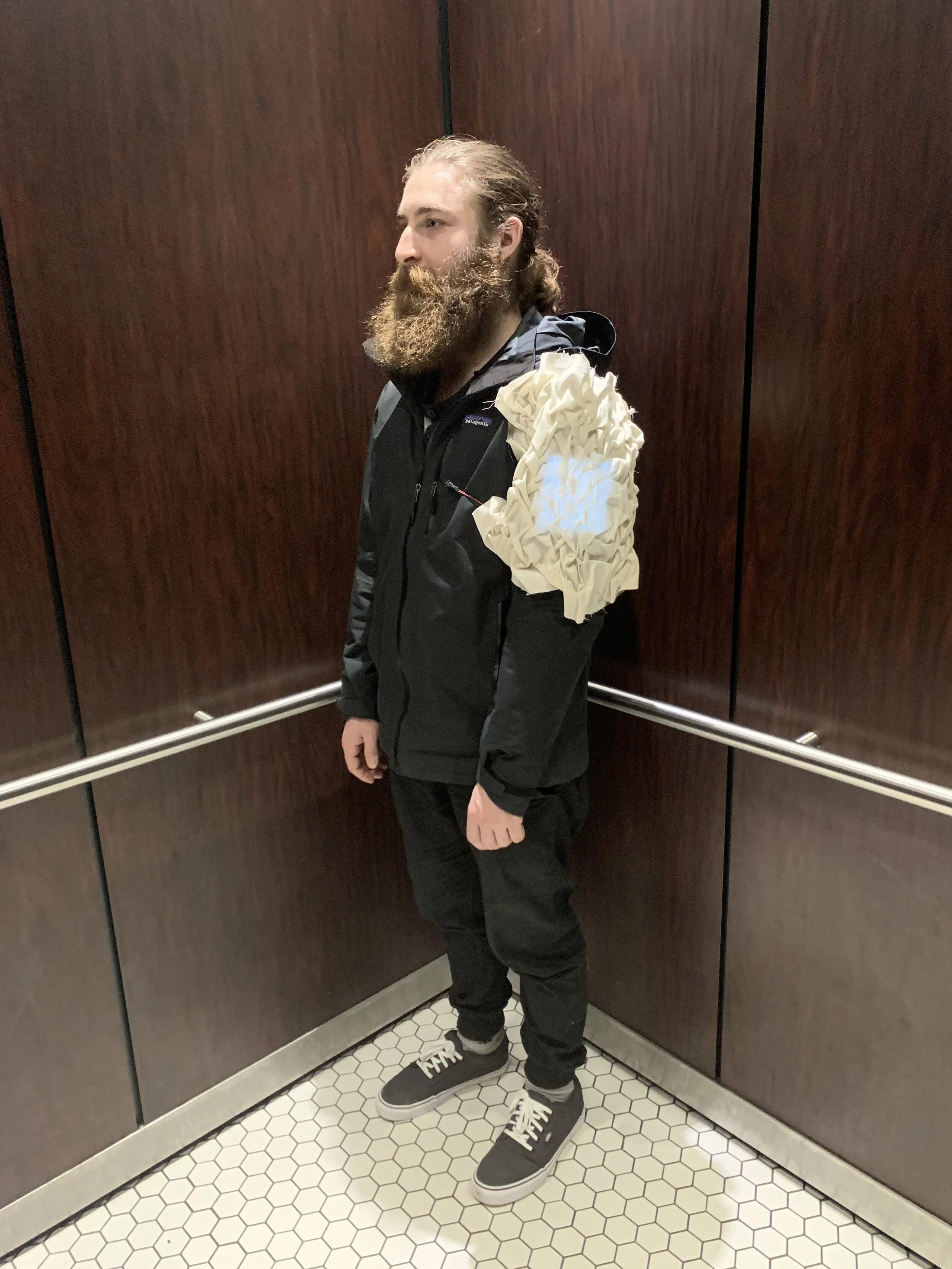ISWC' 19 and TEXTILE INTERSECTIONS conference in London, UK
This year, just before the beginning of the academic year, I had the joy of traveling to London for a week full of e-textiles research and sharing! Listening Space, the project that I have been working on with Audrey Briot since last spring was selected for the ISWC (International Symposium of Wearable Computers) Design Exhibition that was chaired by Rain Ashford, from Goldsmiths University of London, UK and Oscar Tomico, from Eindhoven University of Technology, NL and ELISAVA, Spain. The design exhibition took place at the Queen Elizabeth II Center in London, and Listening Space was also published at the conference proceedings. You can find the complete paper here:
“Listening Space: Satellite Ikats” Proceedings of the 23rd International Symposium on Wearable Computers (ISWC), London, UK, September 12-14, pp. 318-321.
Listening Space: Satellite Ikats by Afroditi Psarra, DXARTS, University of Washington, USA and Audrey Briot, DataPaulette Hackerspace, Paris, FR at the ISWC’19 Design Exhibition in London, UK.
Listening Space is an artistic research that was born during the eTextile Spring Break camp that took place in upstate New York at the beginning of April 2019. Following their previous explorations of ecologies of transmissions and wanting to experiment with Software-Defined Radio, the authors, setup a DIY satellite tracking station and aimed at intercepting the NOAA weather satellite audiovisual transmissions. During the course of three days, they observed five satellite passes, intercepted successfully three transmissions and decoded the audio signals into images which they later knitted in order to create a textile archive of the transmissions. Conceptually the project seeks to explore transmissions ecologies as raw material for artistic exploration, to understand and re-imagine in poetic means, representations of audio and images broadcasted from space, while regarding knitted textiles as a physical medium for memory storage and archiving.
Satellite Ikats and documentation video - installation detail
Satellite Ikat detail
Satellite Ikat detail
Some other highlights of the design exhibition were works of students coming from Eindhoven University working with Oscar Tomillo, from IAAC working with Luis Fraguada and Elizabeth Bigger as part of their Datable Studio and from Katia Vega’ s lab at UC Davis.
Layered Embroidery: for Dynamic Aesthetics by Anne Lamers, Evy Murraij, Armando Rodríguez and Elze Schers, Eindhoven University of Technology, NL
We present an embroidery technique that allows for the creation of dynamic fabrics. These embroidered dynamic fabrics allow for the conceal and reveal of information or visuals based on different viewing angles and lighting conditions. Using this technique, fabrics and garments can be used to hide information and patterns. We explain how the technique works and provide technical details concerning the embroidery technique.
Touch Mood: GSR and FITI Enabled Wearable by Yimeng Wei, IAAC, Spain, Luis Fraguada and Elizabeth Bigger, Datable Studio, Spain
It is easy to most humans to communicate with one another, however what is said isn’t always what is meant or intended. Knowing what a person is truly feeling is difficult, and simple misinterpretations can result in missed opportunities. Can we use technology to take advantage of our relationships? Can technology be used to augment our empathy for each other? Accurate identification of people's emotional state is of great significance for interpersonal communication, human-computer interaction (HCI), and medical devices. Combining devices which can measure Galvanic Skin Response (GSR) and Thermal Cameras, we can obtain the skin electrical signal and the temperature of a specific area of the human body as a composite reading of a person’s emotional state. The Touch Mood system allows can give real-time feedback of the subject’s emotional state via the embedded RGB LEDs and nitinol wire enabled transforming fabric array.
Myco-accessories: Sustainable & Biodegradable Wearables by Eldy S. Lazaro and Katia Vega, UC Davis, USA
This paper approaches sustainability in the prototyping process by producing wearables made of biodegradable materials for embedding electronics. We used mycelium, that, unlike other biodegradable materials such as kombucha, algae, or bioplastics, has heat resistance, thermal resistance and hydrophobic properties which makes it suitable to apply in wearables. Moreover, this paper proposes a sustainable life cycle that uses biodegradable materials to embed electronics. For example, we embedded an electronic circuit into mycelium skin to make accessories. After the accessories have been worn, the electronic components can be reused and the mycelium skin composted. Lastly, we present our method for growing mycelium, our design process using common techniques for embedding electronics, and myco-accessories as applications to envision the possibilities of using this material. This paper aims to encourage sustainable prototyping in the field of wearable technology by intertwining biomaterials and electronics.
One of the most interesting aspects of this year’s design exhibition was a conversation that the chairs organized with the exhibition participants, around how we understand wearable technology today, what has changed over the course of the last 20 years that the field has been developing, and how do we see wearables evolving in the future.












